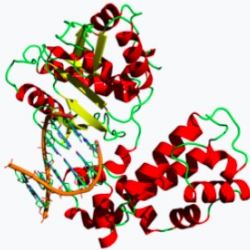Earlier this month I wrote about an experimental antiviral vaginal gel that achieved modest success in preventing outbreaks of genital herpes in women (See Will An Antiviral Vaginal Gel Help Prevent Herpes? Maybe. Maybe Not.) Quite a few people read the article, so I've followed it up with a more detailed look at how herpes medications help control infections. The biochemistry of how these drugs work is fascinating.
Of the two prescription drugs approved by the FDA to treat or prevent herpes simplex (HSV) outbreaks (1), acyclovir is more commonly used (2). Although many people take the drug, few understand why it works. The details of acyclovir's mechanism of action give us a wonderful example of the interaction of chemical and biological science as it pertains to drugs. It's also pretty cool.
The entry of HSV into its host cell (3) triggers a series of events in which the virus "reprograms" the DNA of the cell, forcing it to make viral DNA instead of cellular DNA. This is one of several essential steps required for viral replication; without the production of viral DNA new virus particles cannot be made.
One of the enzymes that HSV carries into the host cell is called DNA polymerase. Its function is assembling an enormous number of simple nitrogenous bases (4) - the four building blocks of DNA - into long strands, which will become new DNA. DNA polymerase is essential for the replication of herpes viruses. If DNA polymerase is not functioning the virus cannot grow.
Figure 1 is a simplified cartoon of how DNA polymerase works - by using single-stranded DNA as a template and adding complementary bases (5) to create a second chain one base at a time. The polymerase "crawls" along the single-stranded (bottom) chain, selects the appropriate base and attaches it to the growing (top) chain. The top of Figure 1 shows the single-stranded DNA template (black dotted arrow), the polymerase (gray blob), the last base that was added to the newly forming chain (cytosine, red box), and the position (red arrow) of next base which will be added to it (thymine, purple circle). This reaction is called extension.
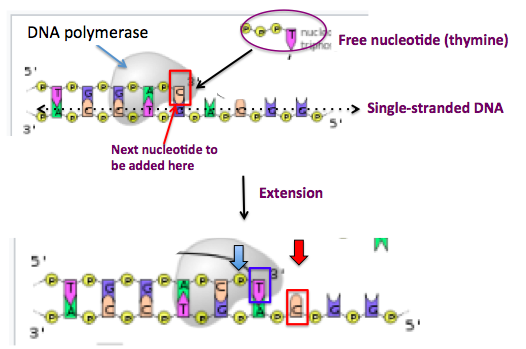
Figure 1. Double-stranded DNA biosynthesis. Images: Wikipedia.
The bottom part of the diagram shows the result of the extension reaction. The top chain is now one base longer (in this case, a molecule of thymine - "T"). The new thymine (blue box), which is now at the end of the growing chain, is now attached to cytosine by a new bond (indicated by the blue block arrow). The red block arrow shows the position where the next nucleotide will be located.
To appreciate the sophistication of the biochemistry behind acyclovir you have to look a bit closer. Here's a closeup of the normal chain extension reaction (Figure 2).
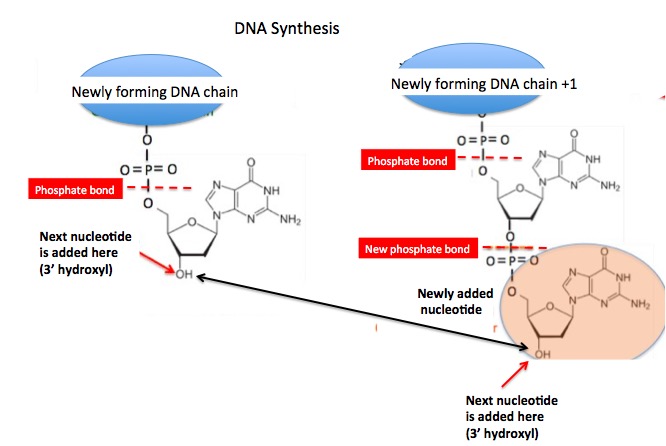
Figure 2. Elongation of newly forming DNA. Don't kill yourself. It's not that bad.
There seems to be a lot going on in Figure 2, but it's simply the same reaction over and over. (Left) DNA is extended by the addition of new nucleotides (6), always to the same hydroxyl group (red arrow), which is called the 3' hydroxyl (don't ask) of the deoxyribose ring (red arrow). Nucleotides are held together by the formation of phosphate bonds - the "backbone" of DNA.
(Right) The next nucleotide (orange) is now connected to the growing DNA strand by another phosphate bond. Then the hydroxyl group of the new DNA strand will be attached, to the 3' oxygen, to the next nucleotide by another phosphate. This process repeats itself millions of times. In human DNA there can be as many as 260,000,000 nucleotides in a strand of DNA. But when this process is interrupted in viruses, they can no longer replicate. Drugs that do this are called DNA polymerase inhibitors, the most common one being acyclovir.
Acyclovir disrupts DNA by a process called chain termination (Figure 3). It is not difficult to understand why the term is used.
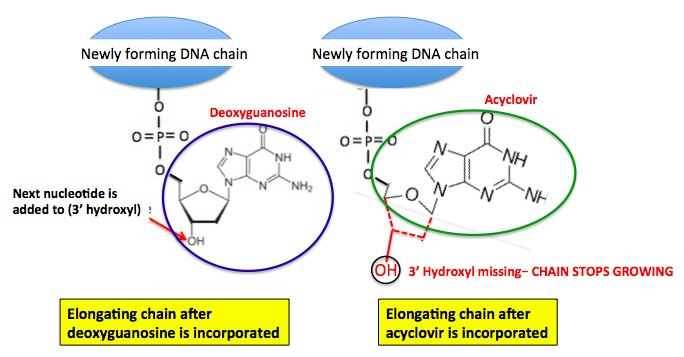
Figure 3. The mechanism of chain termination by acyclovir.
In Figure 3, on the left, is a growing DNA chain, just as in Figure 2, where the last nucleotide unit incorporated was deoxyguanosine (blue circle, the base G, guanine). The next base nucleotide will be added to the new 3' hydroxyl group, as before continuing to elongate the DNA chain.
The structure on the right looks like another growing DNA chain, but acyclovir (green circle), which is structurally similar, was incorporated into the growing chain. It can be said that acyclovir "fooled" the polymerase into using it because this subtle structural change makes a big difference in viral DNA synthesis. Here's why.
Note that a portion of the deoxyguanosine molecule (two carbon atoms and one oxygen) is missing in acyclovir (red hatch lines), most importantly the 3' hydroxyl group. This is what makes the drug work. When DNA polymerase tries to add another nucleotide unit to elongate the chain, there is no hydroxyl group to add on to. That piece of growing DNA will grow no more. The chain is terminated. In a sense, acyclovir causes DNA polymerase to kill itself. Pretty interesting stuff, no?
So, the next time you feel a cold sore coming on and scarf down a couple of grams (7) of Valtrex remember that your misery will be lessened simply because someone figured out a very clever way to tame a nasty virus.
NOTES:
(1) The other drug is Famciclovir, a pro-drug of penciclovir; it does not inhibit herpes but is metabolized to penciclovir, the active drug.
(2) Valtrex is a pro-drug of acyclovir, which is more effective because it is better absorbed and gives higher blood levels of acyclovir than the active drug itself. Valtrex is usually the preferred drug.
(3) Viruses are obligate parasites; they can only replicate inside a specific host cell.
(4) DNA is made up of four bases - T (thymine), G (guanine), A (adenine), and C (cytosine). In RNA U (uracil) replaces thymine.
(5) In double-stranded DNA adenine always pairs with thymine and guanine with cytosine. It takes a chemistry lesson to explain why. You don't want this. Trust me.
(6) The naming of DNA components can make you insane. There are four bases - T (thymine), G (guanine), A (adenine), and C (cytosine). But to form DNA, these bases must have two other groups attached to them - a sugar (ribose for RNA and deoxyribose for DNA) and a triphosphate group. Even though the nucleotide - the fully functional unit - has the sugar and phosphate groups appended to the bases, the nucleotides are still referred to, in an abbreviated manner, as the names of the bases. Here's a little graphic that may help keep you at least marginally sane.
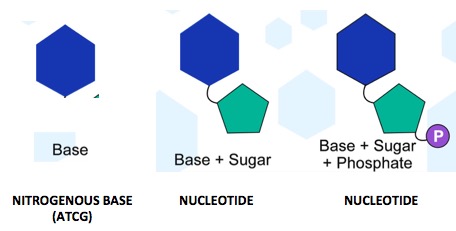
(7) Take it sooner rather than later. Valtrex/acyclovir works much better at minimizing an outbreak than making it heal.
